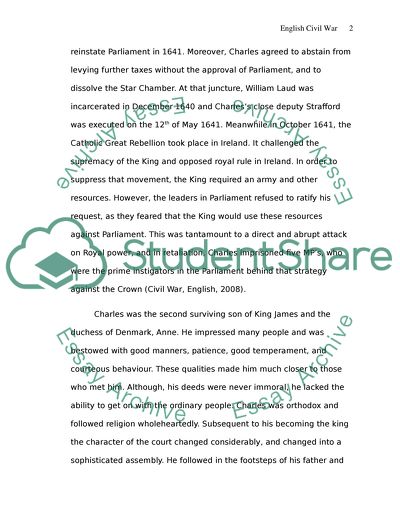Cite this document
(“To question to what extent did the dissolution of Parliament in 1629 Essay”, n.d.)
To question to what extent did the dissolution of Parliament in 1629 Essay. Retrieved from https://studentshare.org/miscellaneous/1547391-to-question-to-what-extent-did-the-dissolution-of-parliament-in-1629-sow-the-seeds-for-the-english-civil-war
To question to what extent did the dissolution of Parliament in 1629 Essay. Retrieved from https://studentshare.org/miscellaneous/1547391-to-question-to-what-extent-did-the-dissolution-of-parliament-in-1629-sow-the-seeds-for-the-english-civil-war
(To Question to What Extent Did the Dissolution of Parliament in 1629 Essay)
To Question to What Extent Did the Dissolution of Parliament in 1629 Essay. https://studentshare.org/miscellaneous/1547391-to-question-to-what-extent-did-the-dissolution-of-parliament-in-1629-sow-the-seeds-for-the-english-civil-war.
To Question to What Extent Did the Dissolution of Parliament in 1629 Essay. https://studentshare.org/miscellaneous/1547391-to-question-to-what-extent-did-the-dissolution-of-parliament-in-1629-sow-the-seeds-for-the-english-civil-war.
“To Question to What Extent Did the Dissolution of Parliament in 1629 Essay”, n.d. https://studentshare.org/miscellaneous/1547391-to-question-to-what-extent-did-the-dissolution-of-parliament-in-1629-sow-the-seeds-for-the-english-civil-war.


